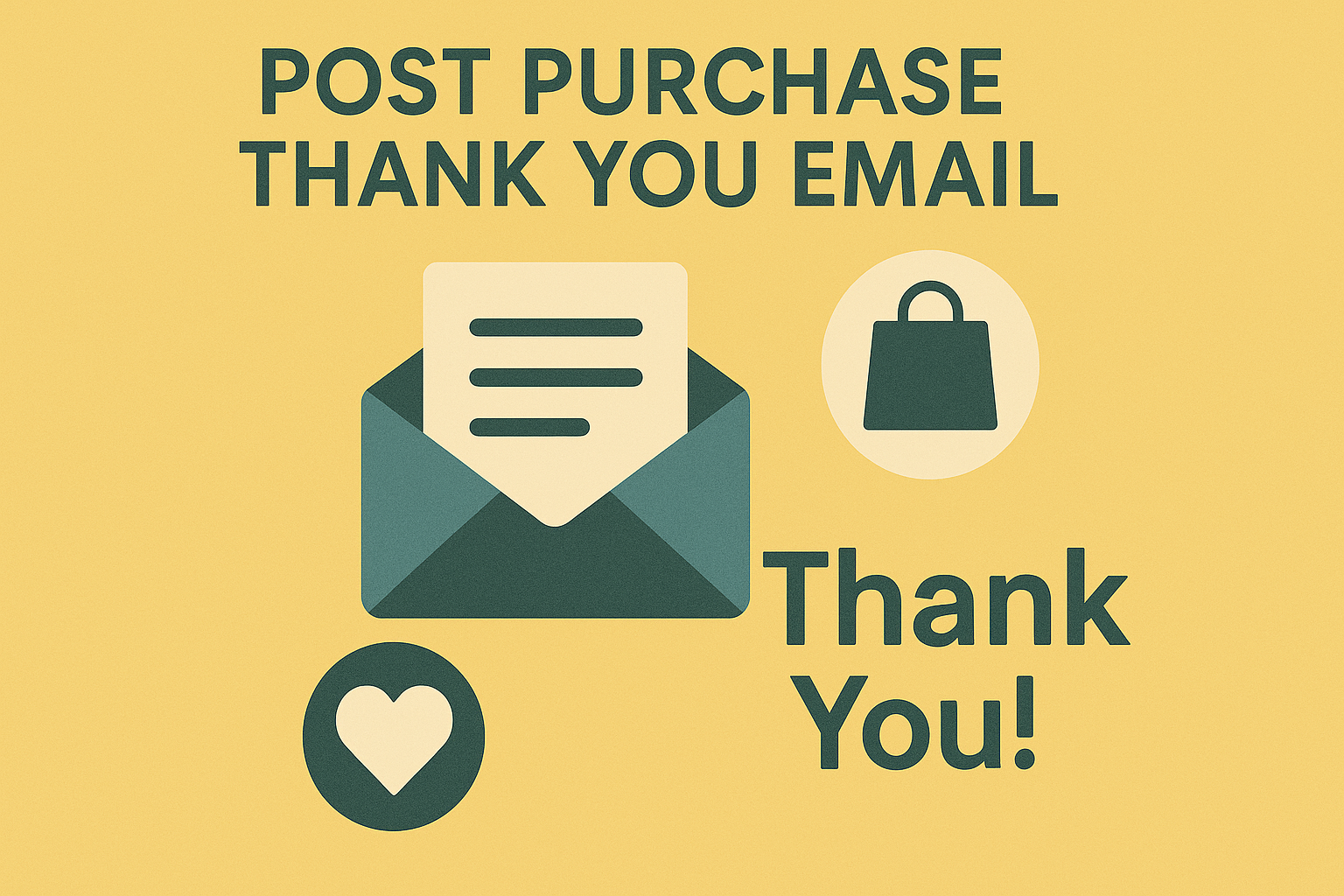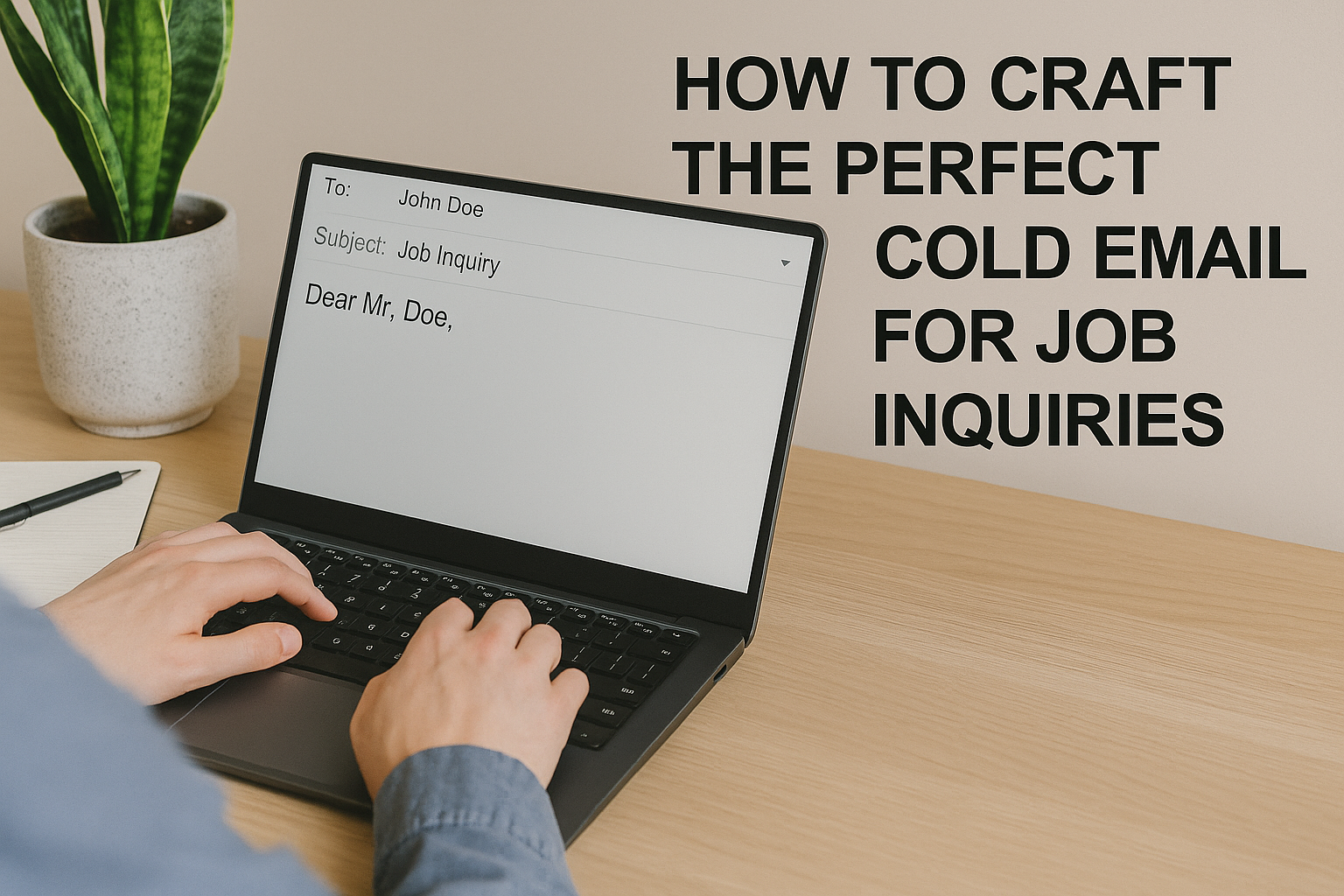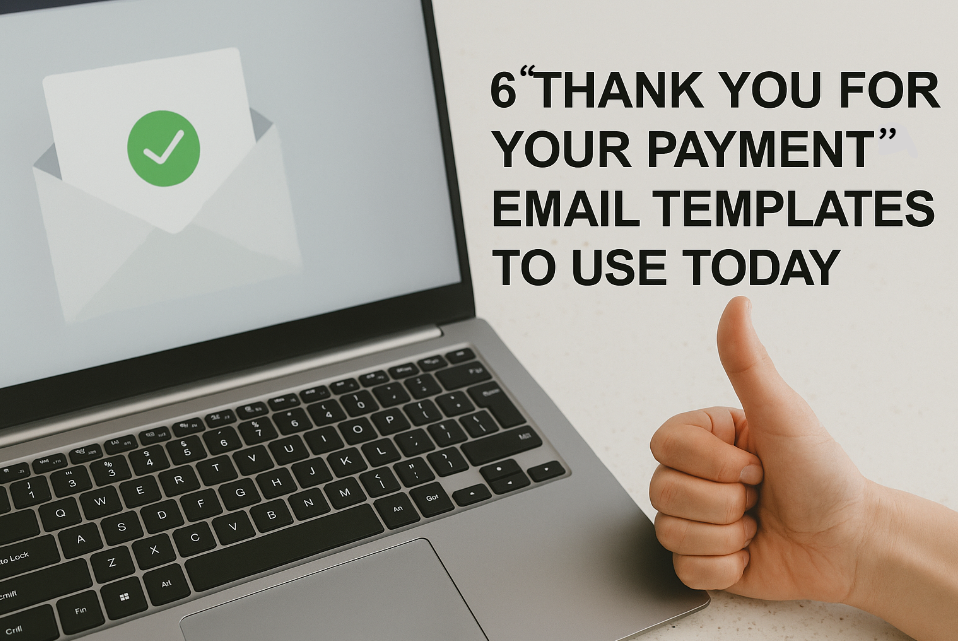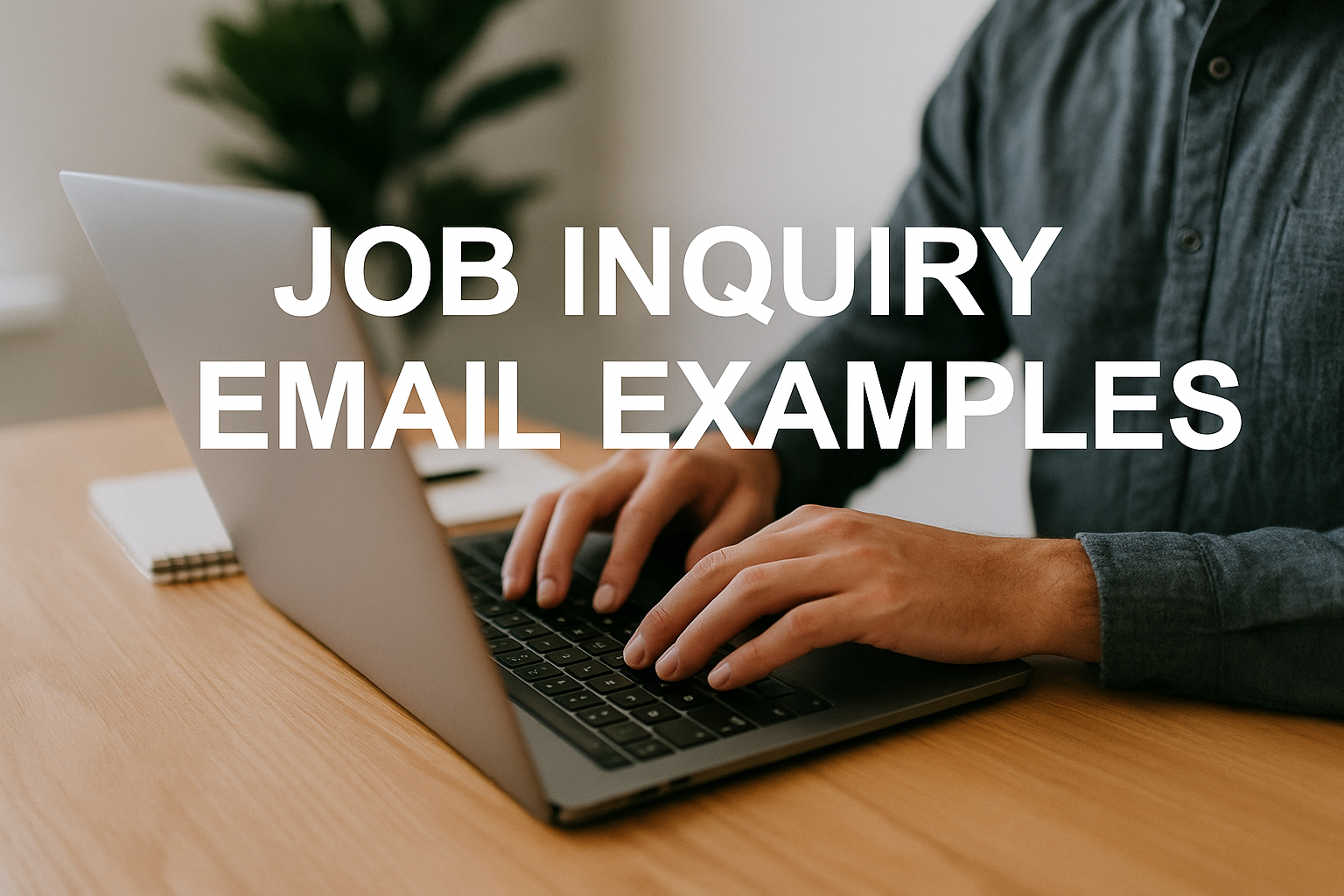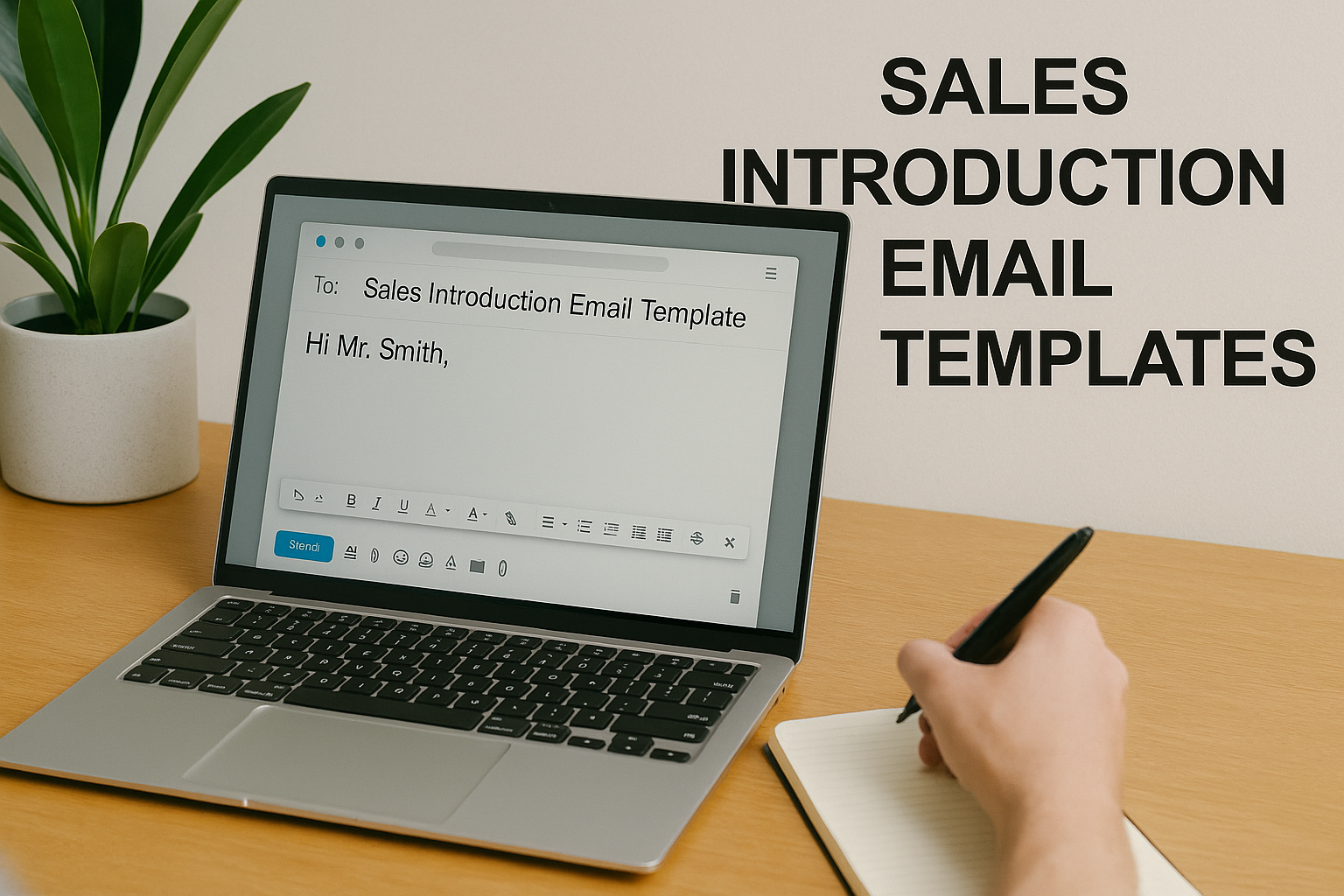10 Effective Post-Purchase Thank You Email Templates & Tips
Key Takeaways
-
Post-purchase thank you emails help you build lasting customer relationships and improve brand loyalty across the globe.
-
Nothing like personalized notes and sincere thanks to make customers feel appreciated and come back for more, no matter what your audience.
-
By incorporating transparent information about the purchase, targeted suggestions, and quick ways for customers to get support, you can increase customer delight and confidence.
-
Well-timed follow-up emails — like immediate thank yous and experience check-ins — nurture engagement throughout the journey.
-
By defining success in terms of engagement, revenue, and loyalty metrics, you can continually optimize your emails.
-
By leveraging sophisticated personalization and segmentation, you can keep your emails relevant and effective for each customer segment.
A post-purchase thank you email is an email sent to shoppers after they complete a purchase. Brands utilize these emails as an opportunity to express gratitude, provide order information, and generate trust.
They typically contain order numbers, shipping information, and contact information for support, if necessary. A lot of teams will include touches or offers to make buyers feel special as well.
Beyond the Transaction
A purchase is more than a transaction. It’s the beginning of a more extended relationship between a company and a customer. When you show genuine gratitude post-purchase, it’s what takes brands from being a transactional destination to a place people want to go back to.
Well-considered thank you emails don’t just seal a deal, they unlock a relationship. When buyers witness that their selection is respected, you establish a mutual relationship of profit.
The First Impression
A thank-you email helps define the way customers feel about your brand once they purchase. A straightforward note of gratitude makes for a cozy, inviting beginning. It demonstrates that you observe and appreciate their selection.
Calling them by name or referencing the specific item they purchased makes the note more personal. Customers react more to this type of care because it’s real, not generic.
For example, ‘Hi Maria, thanks for purchasing our sustainable water bottle,’ sounds more natural than a blanket ‘Thank you for your order.’ All thank you emails must align with your brand’s broader mission and values.
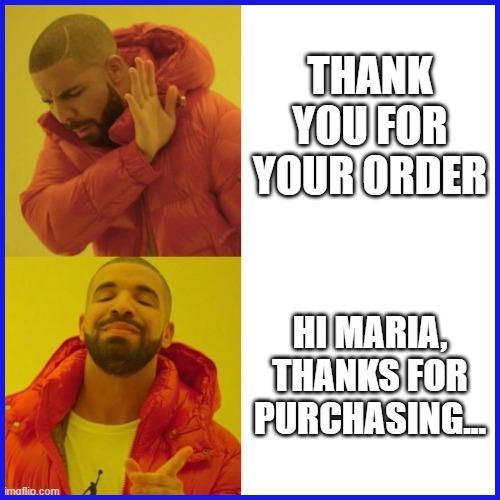
If your business has a social or environmental aspect, just say so. With 84% of Gen Z expecting brands to care about these causes, being transparent and authentic about your purpose can help you differentiate.
A friendly welcome encourages people to find out more about you. A specific CTA—such as ‘See how our products are made’ or ‘Join our community’—can help convert a one-time buyer into a fanatic.
The Relationship Bridge
Trust builds when merchants express real appreciation. A thank you email can be simple: “We appreciate you choosing us,” but it should sound honest and not forced.
Having your customers share feedback or reviews helps make that bond even stronger. Solicit their feedback or provide a shortcut to review. Most buyers love assisting brands get better, particularly if they think their voice counts.
Follow-up emails like product tips or FAQs keep the conversation going. This assists customers in deriving maximum value from their purchase and establishes a pattern of consistent communication.
For instance, brands typically include a review request or care guide a few days after the initial thank-you note. Brands that are partners, not sellers, generate deeper loyalty.
Whether it’s stories, updates, or even behind-the-scenes content, it can help customers experience feeling a part of the brand’s journey, instead of feeling like a number.
The Value Exchange
A great thank you email indicates what each side gets. When customers feel seen and heard, they stick around. Brands can capitalize on this point in time by providing exclusive offers, such as a coupon code for their next purchase or first dibs on new products.
For example, a ‘10% off your next purchase’ code sent within 10 days can encourage repeat business. Feedback requests demonstrate to your customers that their thoughts are important and that they can help you build a better product.
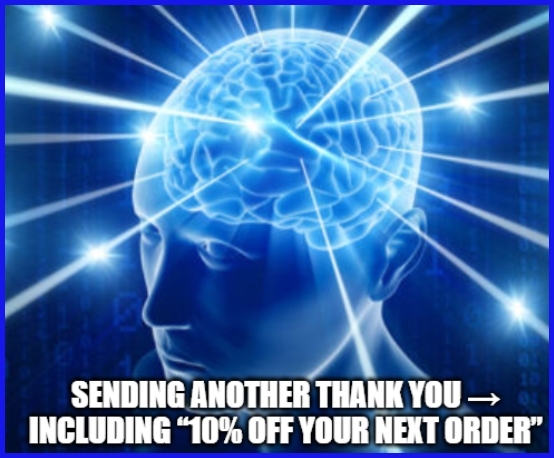
For instance, a brief survey link in the thank-you email can solicit candid feedback. It pays to recommend products based on what customers have just purchased. This may just be a basic ‘You may like…’ area.
Providing free shipping for orders above a certain value or emphasizing a subscribe & save option can help tip the scale in favor of buying more. A sequence of post-purchase emails—care tips, replenishment reminders, special offers—keeps the brand front-of-mind and provides customers a reason to revisit.
Anatomy of a Perfect Post-Purchase Email
As we’ve yet to say around here, a well-crafted post-purchase email helps brands build trust, drive engagement, and keep customers coming back. Not just a thank you—it’s a feedback, relationship-building, add-value tool, optimally dispatched after customers have had a chance to enjoy their order.
The following elements make up an effective post-purchase email:
-
Clear subject line that invites and opens without pressure
-
Personalized greeting and message
-
Transparent order and delivery details
-
High-quality images and a visually appealing layout
-
Simple, clear call to action
-
An easy way to provide feedback or reviews
-
Helpful product recommendations
-
Quick access to support
-
Consistent brand voice
-
Incentives or resources for added value
1. The Subject Line
It needs a great subject line, which is brief and obvious, like “Thank you for your purchase, [Name]” or “How was your [Product] experience?” These lines appropriately set expectations and feel inviting.
Personalization, like the customer’s name or product, increases open rates and relevance. Get creative with the formats—throw some questions, emojis, or direct statements to test. For instance, ‘We hope you’re loving your new headphones 🎧‘ is engaging but not aggressive.
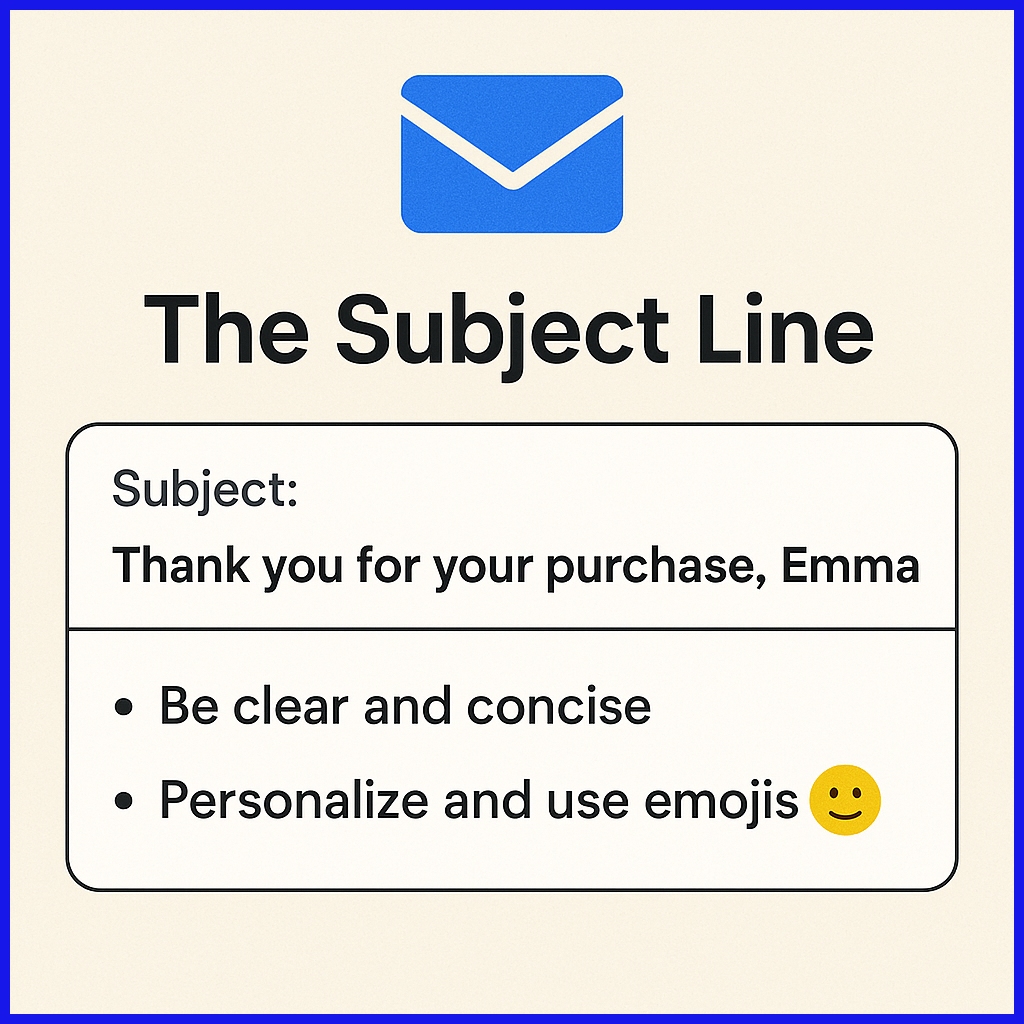
Use simple language, ditch the jargon, and ensure that the subject is in line with the email’s primary message.
2. The Personal Touch
Open with ‘hi’ and the customer’s name. It sounds more authentic and gets your note noticed among the canned emails. Recall the product they purchased or the timing, such as “Hope you’re lovin’ that blender since it arrived last week.
This demonstrates you’re attentive and care about their experience. Add a short thank you note: “We appreciate your trust in us.” Including a personal note from a team member or founder, such as “—Sam, Customer Experience Lead,” fosters a connection that’s difficult to feign.
3. The Core Details
Put the key information up front. Display the product name, the date of the order, and the expected delivery. If the order has arrived, link to tracking or confirmation so customers can verify status or delivery proof.
This alleviates confusion and support tickets. Include a return policy paragraph with an obvious link/summary. For instance, “Need to return or exchange? This is comforting to buyers in case something goes awry.
Recommend related items or accessories (ex. ‘You may enjoy these blender recipes“) to assist customers in getting additional value from their purchase.
4. The Next Step
Request reviews/feedback the easy way. Invitation to loyalty programs or newsletter. Recommend complementary or add-on products. Provide an easy customer service link.
5. The Brand Voice
Stay consistent to your brand’s tone, be it friendly, formal, or playful. Use language that resonates with your audience and makes them comfortable. Just be sure the tone is consistent with the rest of your customer journey.
Tailor your message for different purchasers where possible.
Strategic Email Timing
Nailing the timing of your thank-you emails can set you apart. The right timing of your post-purchase e-mails drives higher open rates and establishes credibility. By timing your messages to critical moments in the customer journey, you can stay relevant without clogging inboxes.
Carefully timed provides your brand a greater opportunity to convert a one-time purchaser into a loyal, returning customer.
The Anticipation Gap
There’s naturally a delay between when they purchase and when their order ships. Updating customers during this wait is critical. Brief, nice little updates about its shipping or your delivery date create anticipation and trust.
Shipping confirmations are particularly useful. They comfort customers that their order is headed to them. This is the perfect opportunity to encourage customers to post their excitement on social media. Recommend posting about their purchase or sharing a photo when it arrives.
These posts can generate buzz and spread the word about your brand. Just don’t overdo it—too much contact during the wait could convert anticipation into aggravation.
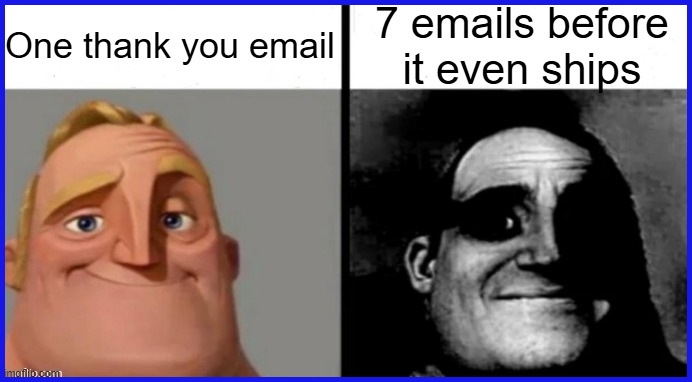
The Experience Check-in
After the product is delivered, a check-in email helps you know how things went. Check if they’re happy with what they received, and encourage frank criticism. A lot of brands, for example, send a review request email roughly two weeks post-delivery, while the experience is still top of mind.
Thanking the customer again and offering assistance if they have questions demonstrates you’re interested in more than just closing a sale. This follow-up establishes durable trust, and it can identify any problems you have to remedy.
The Long-Term Nurture
A consistent stream of emails keeps the bond robust. Messages associated with birthdays or anniversaries have a personal feel and increase loyalty. Mail some tips or content related to their last purchase.
Remind them about your products periodically, but not so frequently that it comes across as spam.
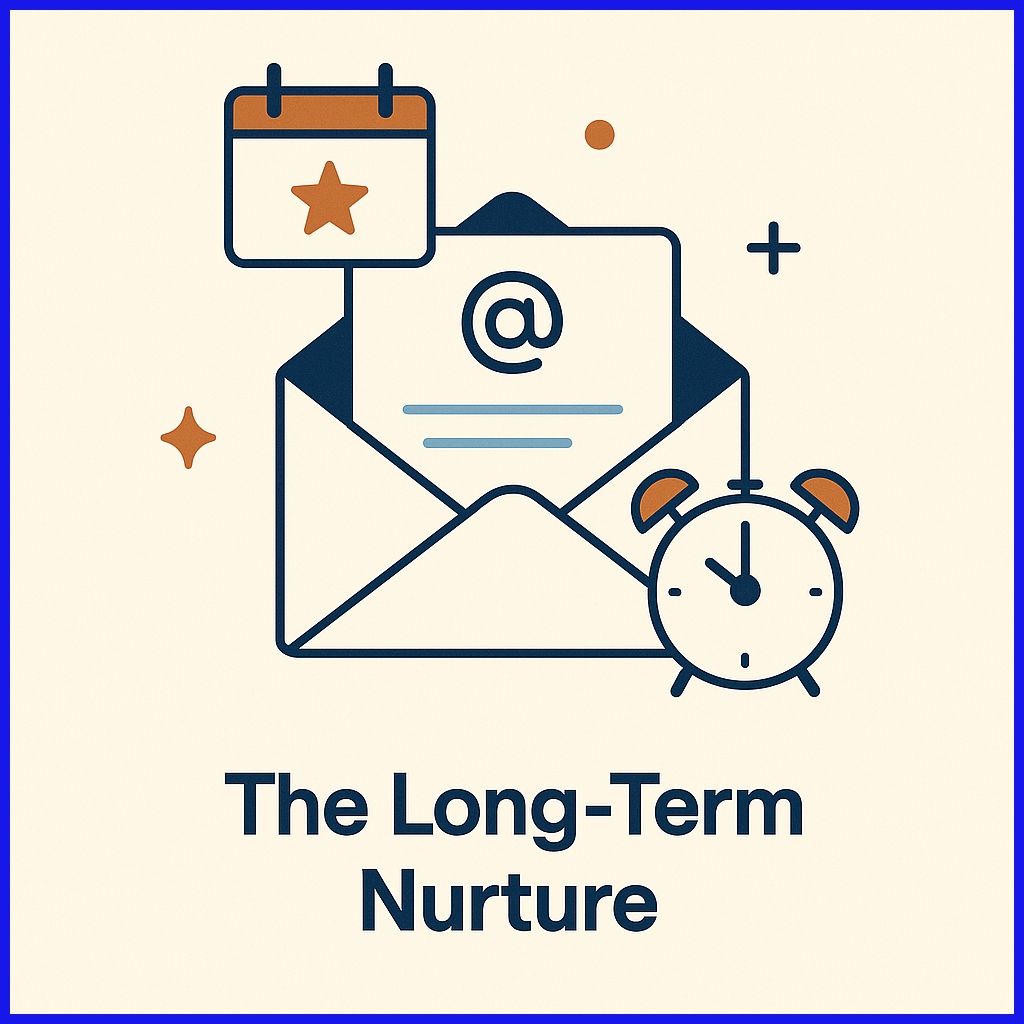
The Psychology of Gratitude
Gratitude is not just a nicety — it is a psychological instrument that molds the way customers perceive your brand and their experience with it. A simple note of thanks, following a sale, does more than make buyers feel loyal — it fosters an atmosphere of trust and establishes the foundation for a lasting relationship.
Research has demonstrated that gratitude enhances well-being and optimism, but builds stronger connections between both people and brands. Business gratitude has obvious advantages for both parties.
Emotional benefits of expressing gratitude to customers:
-
Builds trust and connection
-
Promotes loyalty and retention
-
Fosters feelings of appreciation and respect
-
Encourages repeat business
-
Boosts customer satisfaction
-
Enhances brand reputation
Reciprocity
A mere thank you is enough to ignite a reciprocal cycle of give and take. When customers feel appreciated, they’re more likely to reciprocate—leave a review, spread the word, make a referral. Providing a little incentive, such as a special discount or a chance to win, can push them over the threshold.
For instance, a brand could say, ‘We love your feedback—share your thoughts to enter a gift card giveaway!’ This method makes gratitude a two-way street.
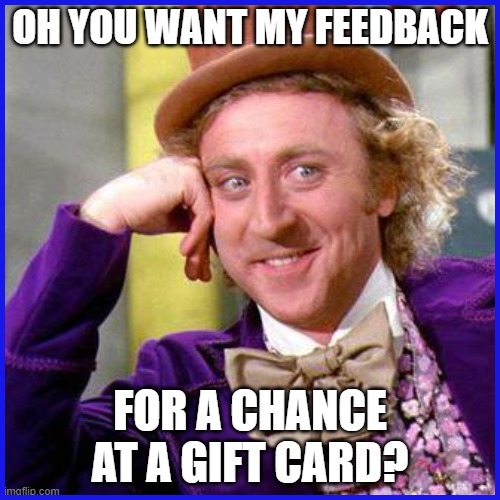
Customers want to hear that their voices matter. Thank you emails are a great opportunity to request candid feedback or a review, being transparent that their words influence the brand’s evolution. This not only makes them feel important but also demonstrates that the brand appreciates their time and opinion.
Belonging
Folks want to belong to something bigger than they are. Inviting customers into a brand community, an online group or forum, or a loyalty program, can cultivate this sense of belonging. By sharing stories and testimonials of other customers it allows new buyers to see themselves in the brand’s world.
When brands emphasize ‘we,’ ‘together, ’ and ‘our, ’ it communicates that each customer is an important part of the community. Brand values count. Emphasizing common values—such as sustainability, fairness, or innovation—cultivates a stronger connection.
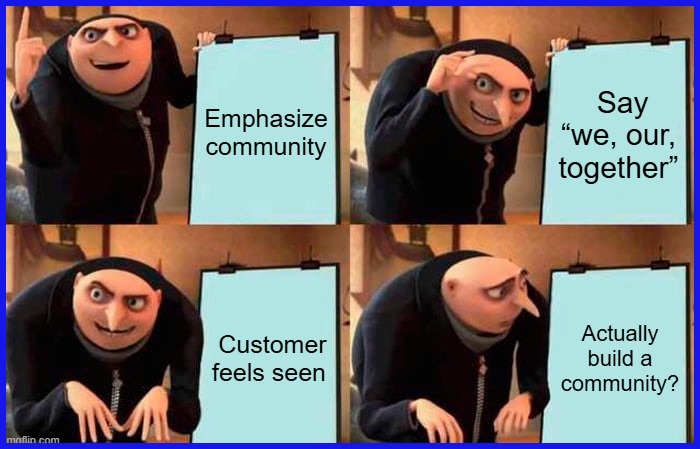
Customers who resonate with a brand’s purpose tend to be loyal and generate great word of mouth, too.
Reassurance
Straightforward content in post-purchase emails can soothe doubt. Explaining what happens next, where to seek help, or how to track an order alleviates stress. For instance, a fast ‘Most customers love this’ can instill trust.
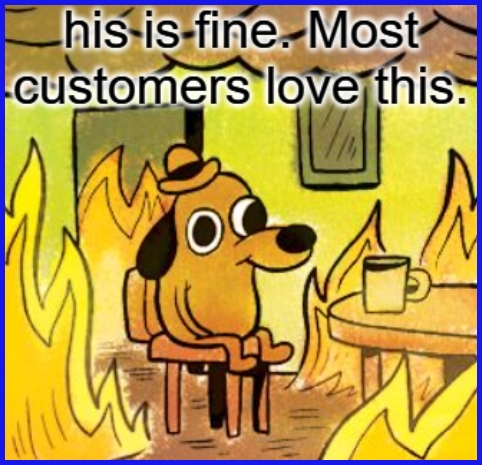
Hassle-free return or exchange policies make a difference. If customers know that they can return something with no effort, they feel more secure when purchasing. Every note should have them know that their satisfaction is a priority, demonstrating a true investment in their happiness.
Measuring Your Success
Tracking post-purchase thank you emails is vitally important for any business that wants to turn loyal customers and increase sales. These emails are a chance to build trust and drive repeat business, but tracking their real impact demands a careful glance at a few metrics.
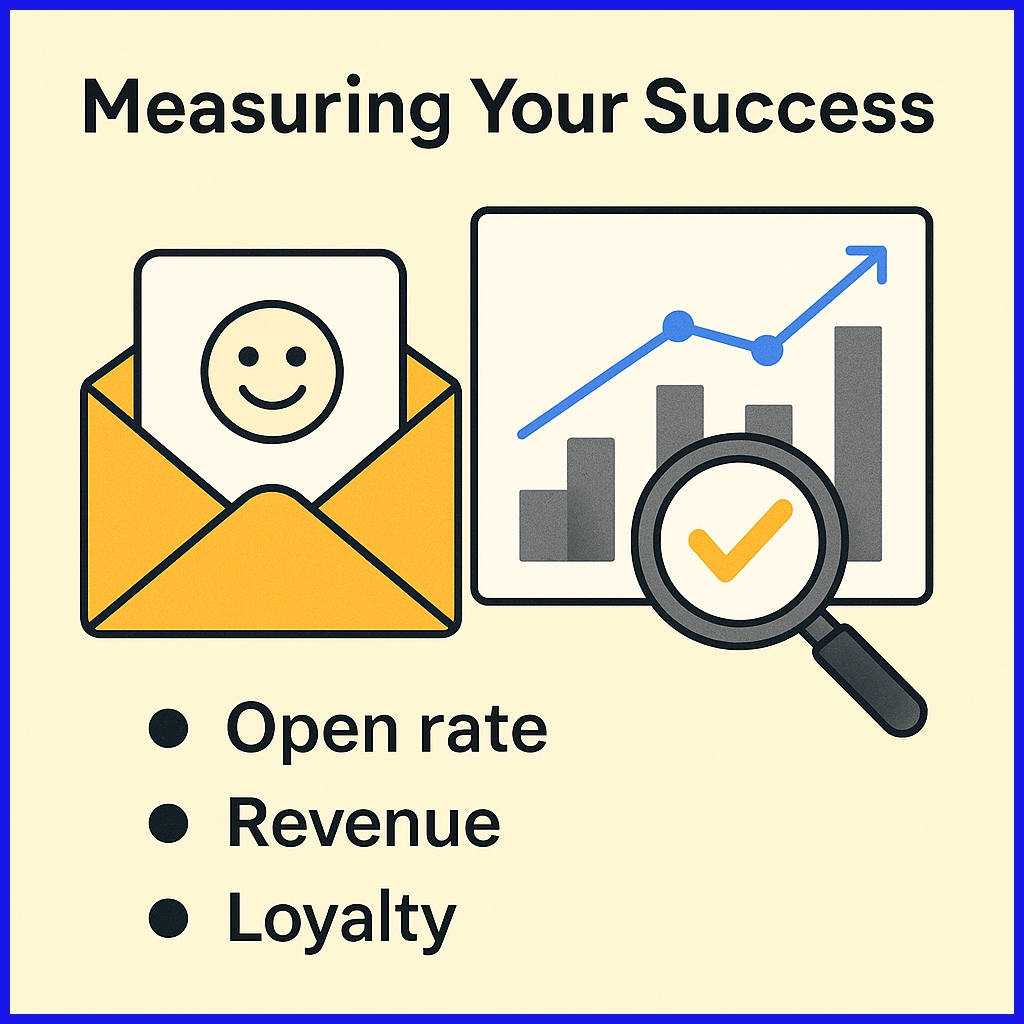
It’s risky not to track these numbers — 36% of experts don’t measure ROI, missing out on insights for growth. Below are the most important ways to measure the success of your thank you emails:
-
Engagement Metrics: Look at open rates, click-through rates, and customer feedback to see how your messages perform.
-
Revenue Metrics: Track sales, customer lifetime value, and revenue changes to judge email effectiveness.
-
Loyalty Metrics: Measure repeat purchase rates, retention, and loyalty program sign-ups to see if emails build lasting connections.
-
Timing and Follow-up: Sending emails at the right moment—usually a few days to weeks after buying—can help meet customer needs and boost engagement.
-
Survey Incentives: Offering small rewards can raise survey response rates by 15%, giving you more feedback.
-
Comparative Analysis: Measure before and after you begin sending thank you emails to see the difference.
Engagement Metrics
|
Metric |
Description |
Benchmark/Example |
|---|---|---|
|
Open Rate |
The percentage of recipients who open your email |
Up to 217% higher than usual emails |
|
Click-Through Rate |
The percentage who click on links in the email |
Varies by industry and style |
|
Social Shares |
How often is your email shared online |
Track mentions/tags on major platforms |
|
Feedback Responses |
Number of replies or survey completions |
Increases with incentives |
A/B testing teaches you what works. Experiment with two different types of thank you emails—switch up the subject line, layout, or call to action. Look which one has more opens or clicks.

If customers share your email on social media, mention it in their posts, or complete your follow-up survey, that’s a signal your content reached a chord. You can respond to this feedback request at the bottom of each email. Basic questions such as ‘Did we meet your needs?’ can steer your next moves.
Revenue Metrics
Sales from thank you emails are the most straightforward way to see if your efforts pay off. Other companies see a thoughtfully designed post-purchase email strategy driving 30% or more of revenue.
By concentrating on retention with these emails, you can help retain more revenue—20% more—because it costs five times as much to acquire a new customer than to retain an old one.
|
Metric |
Description |
Example/Notes |
|---|---|---|
|
Sales from Email |
Revenue linked to post-purchase email campaigns |
Compare before/after campaigns |
|
Customer Lifetime Value |
Average revenue per customer over time |
Higher with effective follow-ups |
|
Retention Rate |
Percent of customers who buy again |
Should rise after campaigns |
Examine sales figures pre and post, beginning your thank you email plan. This is where you can demonstrate actual revenue shifts to help you visualize your return on investment.
Loyalty Metrics
Measuring loyalty is not just about sales. See what your repeat purchase rates are—are customers returning after receiving your thank you email?
Following sign-ups in your loyalty program immediately after these emails can demonstrate if your message constructs trust. Retention rates highlight the bigger picture: are customers sticking with you over time?
Incentives do help—a small discount, for example, increases survey response rates by 15%. It’s significantly less expensive to retain a customer than to acquire a new one, so loyalty metrics are worth the effort.
Advanced Personalization Tactics
It’s these types of advanced personalization in post-purchase thank you emails that help businesses forge real connections with buyers. It means going beyond the basics of ‘hello’-level personalization and applying what you know about shoppers to make every message matter. These tactics can increase loyalty, increase repeat sales, and keep brands top of mind after the sale.
Segmentation is at the heart. Not every buyer is identical. You can segment customers by order size, location, repeat purchases, or even product type. For instance, new customers might receive a thank-you note with a little guide on how to use their new purchase, whereas dedicated repeat customers are sent a special discount or early access to new products.
Location-based segmentation can assist with inviting people to local events or targeting region-specific deals. Segmentation makes each customer feel visible, not just another name on a database.
Data analytics takes this to an even greater extreme. Leveraging analytics, brands can observe purchase and browsing patterns to tailor deals and content. For example, if a customer purchases running shoes, the subsequent thank-you note email might feature running socks or fitness monitors.
With this, you can target additional effort toward the most likely repeat buyers. Dynamic content is another weapon in the arsenal. It allows brands to dynamically modify elements of the email according to consumer information. For instance, one section of the thank you email could display items related to what the shopper previously viewed or purchased.
If a customer commented on a past order, you can respond to that comment directly in the next email, demonstrating your brand hears and acts. This type of personalized content can occur in emails, on social media, or even when they visit your store or site, making the entire experience more intimate.
Testing is key to expanding these tactics. Experiment with various subject lines, offers, and layouts for every segment. Monitor the emails that are opened and links clicked, and offers returned to. Perhaps the free shipping deal converts better than a discount code for some purchasers.
A/B testing shows you what works, so you can continue refining. Personalization can even frame the moment of unboxing. A thank you email might request an unboxing photo or comments, transforming an ordinary box into a shareable event.
Conclusion
They work because they feel real. They care, not just about the sale, but about the individual. They recall a brief, thoughtful handwritten note more than a huge sale. So does a plain old thank you — it builds trust. Really smart timing and little touches–like a first name or a tip–make all the difference. Track what folks like. Experiment. Tailor every message to the time. Teams that make this effort are memorable in crowded inboxes. For great relationship glue, keep your thank yous heartfelt, brief, and sincere. For additional smart uses of email, visit the tools at KPI.me. Discover how your team can transform thank yous into actual wins.
Frequently Asked Questions
What is a post-purchase thank you email?
A post-purchase thank you email is a communication sent to customers after they make a purchase. It thanks, it confirms the order, and it can promote ongoing engagement or additional purchases.
Why is sending a thank-you email after purchase important?
Post-purchase thank you email builds trust, shows appreciation, and increases customer satisfaction. It paves the way for further communication and can aid in promoting loyalty and repeat sales.
What should be included in a perfect post-purchase email?
A perfect thank you post-purchase email will have a thank you, order summary, estimated delivery time, customer support information, and an invite to connect or give feedback.
When should I send a post-purchase thank-you email?
Shoot the thank you within an hour or two after the purchase. Fast shipping both comforts the customer and keeps your brand front and center.
How do I measure the success of post-purchase emails?
Monitor things like open rate, click rate, customer feedback, and repurchase rate. These metrics demonstrate the stickiness of your emails with your customers.
Can personalization improve post-purchase email results?
Certainly, personalization can enhance outcomes. Personalize with the customer’s name, what they bought, and the kinds of products they might like.
Are post-purchase emails effective for international customers?
Yes, post-purchase e-mails work all over the world. Make sure the language is clear and culturally inclusive, so it appeals to all customers, even those not in the US.

